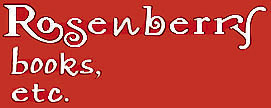A Note on this Peace Church Edition
This edition is handbound by Rosenberry Books with handmade papers.
Centuries may have passed since a peace church publication has been handbound with handmade papers. One such volume “is properly regarded as the greatest product of the colonial bookmaker’s art.”* In 1748, the new translation of the Martyrs Mirror was a Mennonite answer to the threat of American revolution. The book was meant to strengthen the nonviolent peace church through the stories of nonresistant martyrs.
The pacifist Anabaptist community at Ephrata made a three-year effort to publish the Martyrs Mirror. It was a labor of love. Although Franconia Conference Mennonites requested the publication, Ephrata absorbed labor, risk and costs. There were no subscriptions or obligations for anyone to buy one of the thirteen hundred copies printed.
The cloister sisterhood, the Roses of Saron, decorated the volume in the elaborate and highly-skilled fraktur that is unique to Ephrata. Peter Miller, the editor and chief translator, is said to have slept only three or four hours each night for the three years of intense effort. Fifteen community artisans worked full-time on the monumental work. They boiled linseed oil with lampblack for ink. They pounded rags into paper. They sorted the 1,512 pages and bound the book in leather, wood and brass.
Why are we telling you this story? What is the connection between On All My Holy Mountain and the Martyrs Mirror? We too have decorated our book with fraktur and bound it for you with our own hands. There is a family connection as well. Our ancestor, Bishop Henry Funck, helped to translate the Dutch book of martyrs to the German spoken then by American Mennonites. Most importantly, the Martyrs Mirror was a book published to raise the consciousness of peace at a time troubled by war.
The Martyrs Mirror, itself, was nearly martyred to the revolution. Needing paper for musket cartridges, George Washington sent Captain Henderson to confiscate the unbound and unsold editions remaining at Ephrata. The officer offered to pay, but Peter Miller did not want to assist the war. Miller requested that, to preserve Ephrata’s neutral stance, the pages so long labored over be taken by force. The cloister was then providing hospital care for ill and wounded soldiers, and Captain Henderson ordered six men from the hospital to take their bayonets and remove the books to two waiting wagons. After the charade of force, the captain unofficially made payment.
Black powder and lead ball were rolled into pages of the Martyrs Mirror to make musket cartridges. But the peace church’s book, it seems, proved unfit for use in war. The fibers of the handmade paper were too strong for the soldiers teeth. They could not bite and rip open the cartridges to load their muskets. The Ephrata-Mennonite book proved its peaceful nonresistance.
The Publishers, April 2005
* E. Gordon Alderfer, The Ephrata Commune: An Early American Counterculture (Pittsburgh, PA: University of Pittsburgh Press, 1985), p. 128.
Learn more About Fraktur


